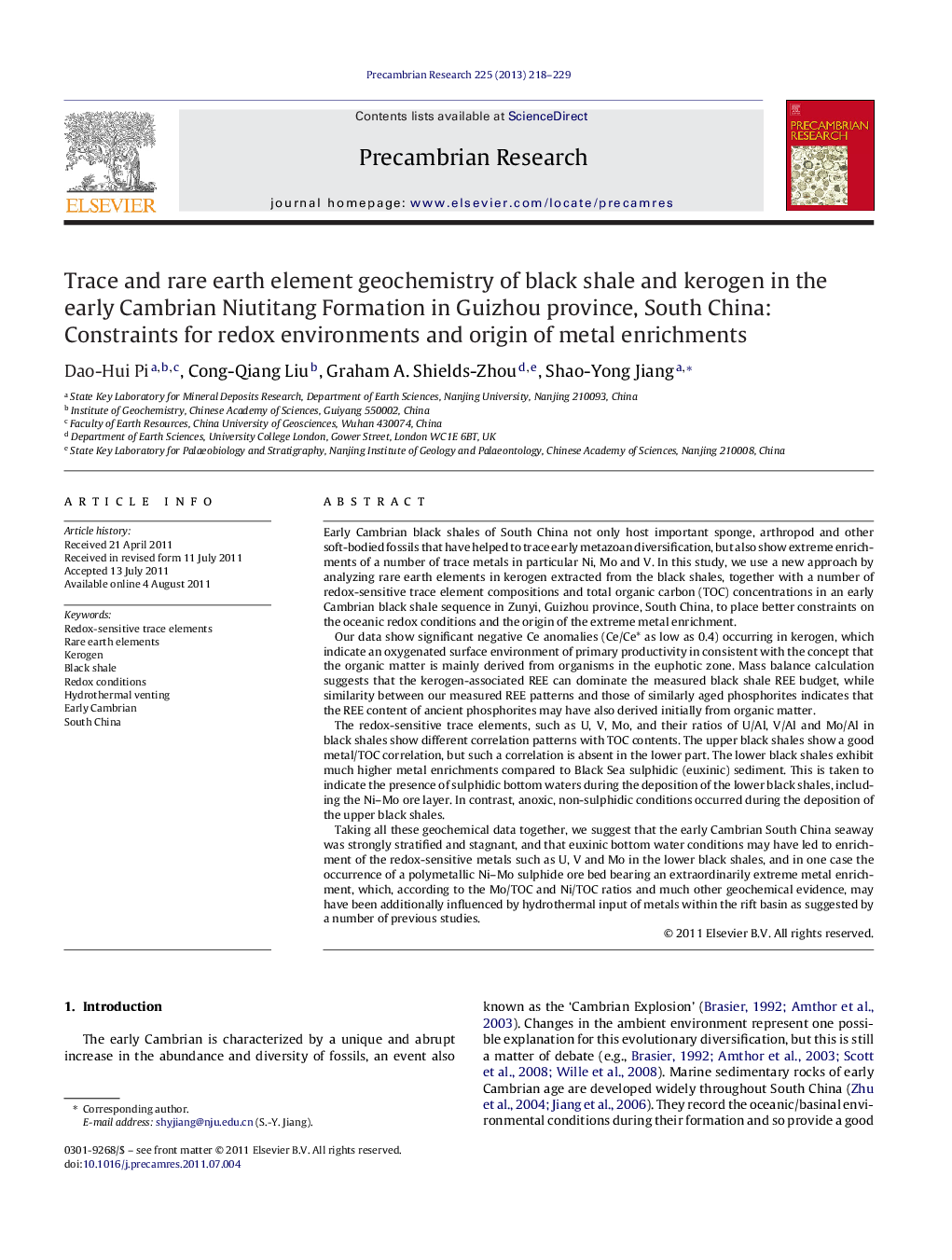| کد مقاله | کد نشریه | سال انتشار | مقاله انگلیسی | نسخه تمام متن |
|---|---|---|---|---|
| 4723327 | 1639649 | 2013 | 12 صفحه PDF | دانلود رایگان |
Early Cambrian black shales of South China not only host important sponge, arthropod and other soft-bodied fossils that have helped to trace early metazoan diversification, but also show extreme enrichments of a number of trace metals in particular Ni, Mo and V. In this study, we use a new approach by analyzing rare earth elements in kerogen extracted from the black shales, together with a number of redox-sensitive trace element compositions and total organic carbon (TOC) concentrations in an early Cambrian black shale sequence in Zunyi, Guizhou province, South China, to place better constraints on the oceanic redox conditions and the origin of the extreme metal enrichment.Our data show significant negative Ce anomalies (Ce/Ce* as low as 0.4) occurring in kerogen, which indicate an oxygenated surface environment of primary productivity in consistent with the concept that the organic matter is mainly derived from organisms in the euphotic zone. Mass balance calculation suggests that the kerogen-associated REE can dominate the measured black shale REE budget, while similarity between our measured REE patterns and those of similarly aged phosphorites indicates that the REE content of ancient phosphorites may have also derived initially from organic matter.The redox-sensitive trace elements, such as U, V, Mo, and their ratios of U/Al, V/Al and Mo/Al in black shales show different correlation patterns with TOC contents. The upper black shales show a good metal/TOC correlation, but such a correlation is absent in the lower part. The lower black shales exhibit much higher metal enrichments compared to Black Sea sulphidic (euxinic) sediment. This is taken to indicate the presence of sulphidic bottom waters during the deposition of the lower black shales, including the Ni–Mo ore layer. In contrast, anoxic, non-sulphidic conditions occurred during the deposition of the upper black shales.Taking all these geochemical data together, we suggest that the early Cambrian South China seaway was strongly stratified and stagnant, and that euxinic bottom water conditions may have led to enrichment of the redox-sensitive metals such as U, V and Mo in the lower black shales, and in one case the occurrence of a polymetallic Ni–Mo sulphide ore bed bearing an extraordinarily extreme metal enrichment, which, according to the Mo/TOC and Ni/TOC ratios and much other geochemical evidence, may have been additionally influenced by hydrothermal input of metals within the rift basin as suggested by a number of previous studies.
► REE in organic matter in early Cambrian Niutitang Formation black shales from Zunyi, South China displays shale-normalized pattern unlike those of modern seawater, but with evident negative Ce anomalies, reflecting the oxic environment of surface productivity rather than the more reducing environment of bottom waters.
► Redox-sensitive trace element contents of U, V, and Mo in early Cambrian Niutitang black shales reveal that the bottom waters were sulphidic (euxinic) in the lower part and changed to non-sulphidic anoxic in the upper part.
Journal: Precambrian Research - Volume 225, February 2013, Pages 218–229
